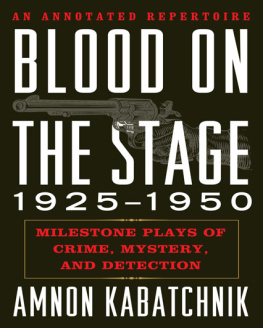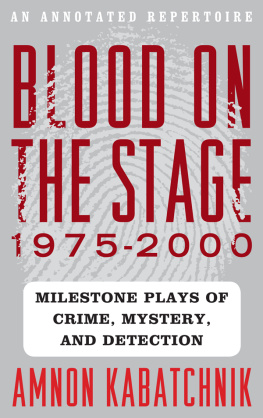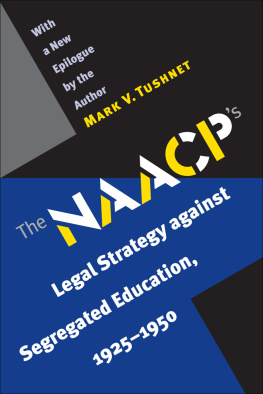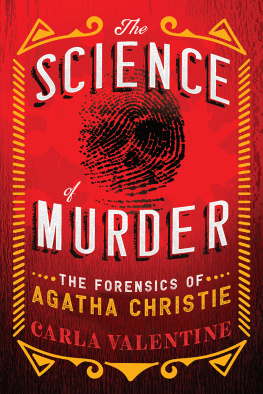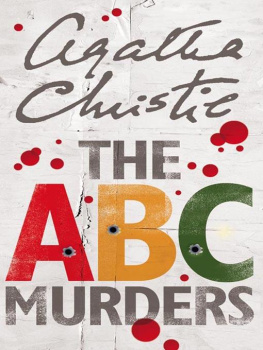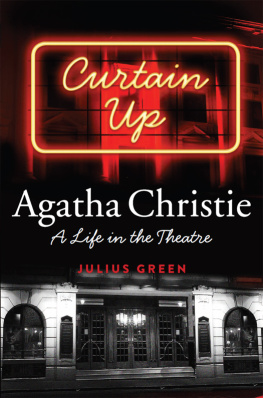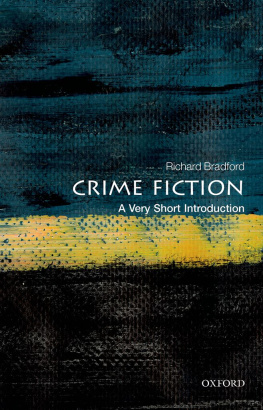Amnon Kabatchnik holds a BS degree in theatre and journalism from Boston University, where he won the Rodgers & Hammerstein Award, and an MFA from the Yale School of Drama. He has been a member of the directors unit with the Actors Studio in New York and has been appointed professor of theatre at the State University of New York at Binghamton, Stanford University, Ohio State University, Florida State University, and Elmira College.
Off Broadway, Kabatchnik has directed, among other plays, the American premiere of Anton Chekhovs A Country Scandal (Platonov) , Evenings with Chekhov , and revivals of Maxwell Andersons Winterset and John Willards The Cat and the Canary . At the Phoenix Theatre, he served as assistant to Tyrone Guthrie on Friedrich Schillers Mary Stuart and Karl apeks The Makropolous Secret , and to Tony Richardson on Eugne Ionescos The Chairs and The Lesson . Kabatchniks work in New York earned him the Lola DAnnunzio Honorary Citation for Outstanding Contribution to the Off-Broadway Theatre. Kabatchnik has directed numerous dramas, comedies, thrillers, and musicals for national road companies, resident theatres, and summer stock. Crime-tinged plays he has staged include Arsenic and Old Lace , Angel Street , The Mousetrap , Ten Little Indians , Dracula , Sleuth , Wait until Dark , Dial M for Murder , and A Shot in the Dark .
Kabatchnik has written a weekly column of book reviews for the Tallahassee Democrat, the Corning Leader, the Star-Gazette of Elmira, New York, and the Chemung Valley Reporter. He has also contributed articles and reviews to the Armchair Detective , Mystery News , Clues , and other journals in the field of suspense.
He is the author of Blood on the Stage: Milestone Plays of Crime, Mystery and Detection : An Annotated Repertoire, 19001925 (2008) and Sherlock Holmes on the Stage: A Chronological Encyclopedia of Plays Featuring the Great Detective (2008), both published by Scarecrow Press.
I would like to express my gratitude to the following friends and scholars, who were extremely helpful in various ways and made this project possible.
Thanks to Marv Lachman, who, several decades ago, invited me to a series of literary parties at his Bronx apartment where he, Bob Aucott, Jon Breen, Lianne Carlin, Pat Erhardt, Allen J. Hubin, Francis Nevins Jr., Otto Penzler, Charles Shibuk, and Chris Steinbrunner suggested that I not only read and collect detective literature but also study its sources, history, and trends. These gifted ladies and gentlemen have since edited journals, penned books, and launched a wave of scholarship in the field. Their influence on the development of this resource book is highly appreciated.
I am greatly indebted to the late publisher Ted Dikty, who planted the seed of Blood on the Stage in my mind, and to professor Robert Reginald of California State University at San Bernardino, for encouraging me to develop an annotated checklist of suspense plays into a book-length endeavor.
A special note of thanks to Bryan Reddick, academic dean of Elmira College, and professors Jerome Whalen and Leonard Criminale, who offered valuable suggestions regarding classic criminous plays.
In my pursuit of old, out-of-print manuscripts and yesteryears newspapers and magazines, I traveled to a number of near and far libraries. My gratitude goes in particular to the librarians of the Steele Memorial Library of Elmira, New York (notably Owen Frank); the Corning, New York, Public Library; the Olin and Uris libraries at Cornell University, Ithaca, New York; the New York Public Library of the Performing Arts at Lincoln Center, Manhattan (especially Rod Bladel, Christopher Frith, Christine Karatnytsky, Jeremy McGraw, and the three little witches of the photocopy room). Thanks also to Howard Prouty, acquisition archivist at the Center for Motion Picture Study, Beverly Hills, California, and Shimon Lev-Ari, director of the Israeli Documentation Center for the Performing Arts in Tel Aviv, Israel.
My appreciation goes to past and present staffers of the national office of the Mystery Writers of America in New York City; Eleanor Bader of Brooklyn; Alexa Kelly, Brian Richardson, Andrew Charity, and Alvin and Myra Chanin of Manhattan; George Koch of Queens; Michele Slung of Woodstock, New York; Nancy McCaig of Corning, New York; Lindsay Bajo of San Diego, California; Helga Schier of Santa Monica, California; Lauren Holingsworth of Culver City, California; Diana James, publicist, of Pasadena, California; and Regina Miller of the Geffen Theatre, Westwood, California.
Finally, salutations to Peter E. Blau of Washington, D.C., and Andrew Joffe of New York City for their input on Sherlock Holmes and the collecting of Sherlockiana.

Poison has claimed victims on the stage since Medea sent a robe smeared with a lethal concoction to her husbands lover, Creusa, who died painfully engulfed in flames ( Medea , 431 BC, by Euripides). Heracles mortally wounds the centaur Nessus with a poisonous dart for having attempted to ravish his wife, the beautiful Deianira ( Trachiniae , aka Maidens of Trachis , 413 BC, by Sophocles). Ironically, the mythological Greek hero suffers a horrible death after donning a garment dipped in poisoned blood, dispatched to him by Deianira, who was jealous of a liaison between her husband and the princess Ione ( Hercules on Oeta , first century AD, by Seneca). Hamlet was killed by a poisoned rapier in the bloody denouement of Shakespeares 16011602 masterpiece. Various venoms were served and swallowed in seventeenth-century Jacobean horror tragedies and nineteenth-century blood-and-thunder melodramas.
Setting aside the blowpipe darts in several dramatizations of Arthur Conan Doyles The Sign of Four (1901, 1903) and the snakebites in Doyles The Speckled Band (dramatized in 1910), The Case of Lady Camber (1915) is the first bona fide poison play of the twentieth century. In the end, it turns out that the lethal talin was not the cause of Lady Cambers demise. Yet the lingering suspicion that a jealous nurse poisoned her is the chief ingredient of suspense in the drama.
The 1920s and 1930s are considered the golden age of detective literature. Characters sip poison in the works of Agatha Christie, Dorothy L. Sayers, Georgette Heyer, Ellery Queen, and John Dickson Carr, and Anthony Berkeleys The Poisoned Chocolate Case (1929) led the pack. Simultaneously, poisoned concoctions became the hallmark of stage thrillers. A venomous mechanism that strikes like a rattlesnake is the instrument of death in In the Next Room (1923), dramatized by Eleanor Robson and Harriet Ford from the 1912 novel The Mystery of the Boule Cabinet by Burton
E. Stevenson. Tondeleyo, a bored, greedy West African woman of mixed race, attempts to poison her English husband in Leon Gordons White Cargo (1923), but is forced to swallow the lethal quinine herself. A poisoned drink is served to an alcoholic, drug-taking, and abusive husband in The Fake (1924) by Frederick Lonsdale. Darts dipped in curare and shot from a blowgun are fatal in The Call of the Banshee , aka The Banshee (1927) by W. D. Hepenstall and Ralph Culliman. Playwright Roland Pertwee used prussic acid in Interference (1927), cyanide of potassium in To Kill a Cat (1939), and crystals of strychnine in Pink String and Sealing Wax (1944) as deadly catalysts. In A. E. W. Masons The House of the Arrow (1928), a wealthy French widow is murdered at home by an arrow tipped in poison. In Masons No Other Tiger (1928), a money-hungry dancer exchanges her friends medicine with poisonous disinfectant to kill her, because she wants to keep an envelope stuffed with 40,000, which the friend had given her for safekeeping. In W. Somerset Maughams The Sacred Flame (1928), a mother feeds a lethal overdose of pills to her helpless paralytic son to end his suffering.

